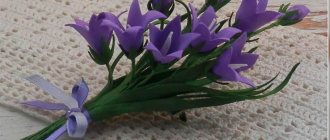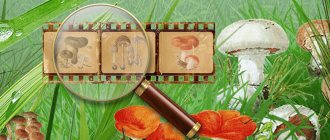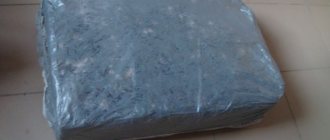If you act slowly and step by step, even an inexperienced master can make an origami dragon out of paper. And adding such a model to your collection is necessary in order to fully feel the connection with Japanese culture. Here dragons are a special phenomenon, a symbol of the natural elements on which the well-being of the people depends. If in the west these creatures personify fire, then in the east, particularly in Japan, they control water, living in thunderclouds or ponds and “managing” the rains. Since dragons are endowed with great power, their origami figures express the wish for strength, wisdom and success in any endeavor.
Mysterious guest from the East
The image of the dragon is most widespread in eastern countries. In China, it is a national symbol, personifying the entire people with their culture and traditions. Not a single large-scale holiday is complete without long, voluminous dolls painted in bright colors.
You can touch the mysterious world of the East, where paper dragons soar over the streets and squares, without leaving your home. The types of origami dragon are many and varied.
You just have to choose a scheme to your liking, follow the step-by-step tips, and then the fairy-tale dragon will come to life right in your hands.
Advice from the experts
A few recommendations will help make your work more original and brighter:
- Paper can be painted in rainbow colors using watercolors, as well as onion skins and strong tea - this will give “natural” stains that imitate the skin of a dragon.
- It is better not to take thick cardboard; it can break at the fold or crumble, and it also loses its appearance after repeated folding.
- The finished figurine can be sprayed with varnish or spray paint, and pearl eyes can be glued on.
Basic blank for a dragon with wings
Often, work on different figures using the origami technique begins with a sequence of the same actions. Such blanks were called basic. A dragon with wings is made from the basic “bird” blank.
It requires the following:
- Take one square sheet of paper, bend and straighten it diagonally.
- Bend and straighten in half in both directions.
- Fold along one of the diagonals and place the side corners inside the workpiece, forming “pockets”.
- Bend the side corners of the top layer of the workpiece towards the middle, bend the upper “blind” corner towards them and bend it; bend the side corners as well.
- Pull the top layer of the workpiece upward, forming a narrow rhombus.
- Turn the workpiece over.
- Also pull up the second layer of the workpiece, forming the same rhombus.
- The “bird” blank is ready.
Refinement of the basic workpiece to the final result
- Bend the side corners of the rhombus towards the center.
- Bend the bottom layer of the workpiece down.
- Align the side corners.
- Bend the top layer of the workpiece in the center, and also bend one part of the remaining bottom layer.
- Form one wing by sequentially bending two corners of the workpiece upward.
- Also form the second wing, turning the workpiece over.
- Make three folds on the long triangle of the workpiece, forming the dragon's neck.
- Make a zigzag fold at the end of the neck - this will be the open mouth of the dragon.
- To make the tail more believable, fold two folds on it.
- The final touch is the zigzag folds on the wings. The dragon is ready.
Such different dragons...
There are an incredible amount of instructions on how to make a dragon.
You can create good old Gorynych from Russian fairy tales, Ender from the famous computer game, or just a small charming dragon that will become the guard of your bookshelf.
To create a dragon, use a square of colored or white construction paper. The square must be folded so that diagonals are formed.
Having smoothed the paper well, the square must be unfolded so that it should have eight rays. Then, using half the scientific lines, from the original position of the sheet, fold a rhombus. Place the part so that the resulting folds face up
The edges of the resulting diamond must be bent inward, so the figure will resemble a kite. The triangle of the upper part of the part must be bent to one side and smoothed well.
Three-headed origami dragon
This craft looks impressive and attractive. An origami dragon with wings can become the main highlight of a home puppet theater or an unusual gift for a lover of oriental culture.
For this dragon you will need a square sheet of paper. It is better to take a large one in order to successfully cope with small folds.
The sequence of actions is as follows:
- bend, unbend the sheet diagonally;
- fold in half to one side, unfold;
- fold in the second direction, continue working;
- lift and unscrew the bottom corner of the top layer diagonally;
- bend and straighten this corner to the fold line again;
- repeat again, bending an even smaller corner;
- in the bottom layer, bend the same corner, open the workpiece;
- bend in half in the other direction, bend two more corners;
- open the workpiece, bend the side folds;
- take out the corners and flatten them into pockets; three will make heads, and the fourth will make a tail;
- form heads and tail as shown in the diagram;
- fold the workpiece again along diagonal lines;
- modify each of the heads according to the diagram;
- form wings;
- arch each neck outward;
- bend according to the paw pattern;
- bend the tip of each muzzle and curve the horns;
- bend the tail and give each neck its own slope;
- the three-headed dragon is ready.
Dragon craft for kindergarten
This simple master class is also suitable for beginners.
- Using a template, cut out the dragon's body and paws from green paper (you can fold the paper in half and cut out two or four elements at a time).
- Then draw lines on half an A4 sheet (yellow), like the sides of a trapezoid, stepping back six centimeters from the edges. You will end up with triangles that will need to be cut off.
- Fold the remaining yellow part, shaped like a trapezoid, into eight parts so that it becomes an accordion. Bend this accordion in half and wings will come out.
- From the second part of the yellow sheet, make the same blank, only fold it not into eight, but into sixteen parts - this will be the breast of our dragon. Fold the paper and apply it to the reptile’s body, bending it slightly along the line of the tummy.
- Take another half of a yellow A4 sheet. Attach the body blank to it and trace along the back, drawing teeth or a wavy line. Cut them out, leaving a little space for gluing.
- Glue this ridge between the two halves of the dragon's body. Then glue in the breast as well.
- Make a tongue for the dragon out of red paper and glue it, plus attach plastic eyes or draw them.
- Then glue the legs, make slits for the wings and insert them. That's all - the paper dragon is ready and you can give it a name.
Dragon made of modules
Modular origami allows you to create bright, colorful dragons of unlimited sizes. By preparing blanks of different colors, you can achieve the effect of scales on the body and tail, which looks great.
How modular paper dragons are assembled is described below.
For the little ones
For beginners and parents with small children, it’s best to start with the basics.
The easiest way to make a paper dragon is applique. Find dragon templates on the Internet, print them out, or draw the creature yourself. Cut out individual parts (body, wings, tail) and glue them together. Paint the product, attach a ribbon to your head and hang it in any suitable place.
You can add liveliness to your work if you create a three-dimensional dragon. To do this, you need to cut out 2 identical dragon figures, glue them together and make a shallow cut approximately in the middle. Install the wings into the resulting slot perpendicular to the body.
Note! Origami envelope: step-by-step master class, features and secrets of making it yourself
Another simple secret to creating a mythical pet is to fold a long strip of paper like an accordion. Attach a pre-cut dragon head to one end with glue, and the tail part to the opposite end. You can control and move the toy by attaching thin wooden sticks to the joints.
Where to start working on modular origami
To fold the modules you need to prepare rectangular sheets of paper.
The easiest option is to buy note paper and cut each piece of paper in half. You can purchase office colored paper. It is brightly colored on both sides, the paint is durable and does not rub off on the folds, like a regular school one. It will need to be cut into equal rectangles.
Using your imagination, you can use any paper product to prepare modules - from food parchment to music pages.
Which paper is better to choose?
The choice of material for crafts must be taken seriously. After all, the entire assembly process, and ultimately the type of product, depends on what paper is chosen. There are several types of paper suitable for working in origami style:
- colored;
- corrugated;
- white printer paper.
To work using the torsion method, corrugated paper is usually used. With its help, you can make a small dragon; to do this, you should twist the paper into a rope and be sure to do this with wet hands.
With this style of crepe paper origami, the dragon is perfect for beginners. This “snake” will only take ten minutes to complete.
The classic version of origami is that it uses specialized paper that is sold in craft stores. If it is not possible to purchase one, then you can use regular paper, which is used for printing on a printer.
When choosing paper for a dragon, you need to consider some nuances:
- If your work will use colored paper, then it is best to opt for double-sided or metallized paper. It will help make the dragon's skin much more natural.
- If you prefer regular office paper, you can first print a pattern in the form of scales on it. This trick will help make it look more like a mythical creature.
An origami dragon craft made from white paper can be painted in the desired color.
This process will appeal to children, as they really love to do it. After all, in the process of creativity you can realize your deepest desires.
There are several types of paper that can be used:
- colored;
- dense, intended for printing on a printer;
- corrugated.
Corrugated paper is sometimes used in the twisting technique. You can make a small paper dragon out of it by twisting it into a flagellum with wet hands.
However, this version of the craft will look more like a snake. Anyone can cope with this task in about ten minutes.
For classic origami, special paper is used, which can be purchased in craft stores. You can also use office or colored paper products. To make the craft more interesting, you should listen to some tips:
- When choosing colored paper, it is better to give preference to double-sided or metallized paper. This way you can achieve a greater resemblance to the skin of an animal.
- If you take office paper, you can first print a pattern on it that looks like dragon scales. This way the dragon will look more natural and will look like a real mythical creature.
If the craft is made from plain white paper, then after it is ready, it can be painted. Children love this activity very much. They can make all their fantasies come true.
How to make modules
The module is created in the following sequence:
- fold the rectangular blank in half lengthwise, as for a classic paper airplane;
- mark a line in the middle, folding and spreading the workpiece across;
- bend both sides of the workpiece to the intended middle;
- bend the lower corners upward at a right angle;
- fold the workpiece horizontally in half;
- fold the workpiece vertically in half;
- work on the module is completed.
Formation of the “base”
In order to create a simple dragon without frills or other additional add-ons, you need a sheet of paper 19x19 centimeters. The square must be bent several times. In this way, curves are created on the paper, along which you can subsequently continue working.
When the bends have appeared, you can already bend the scrap into four right triangles.
Long dragon assembly diagram
Assemble the dragon's head from 55 blue and 2 yellow modules according to the diagram.
Gather a long body; you need to alternate a row with 2 blue and 1 yellow modules and a row with 2 yellow ones; only 88 rows.
Attach the head to the body using two blue modules, as shown in the photo of the origami dragon. For reliability, you can coat the fastening modules with glue. We bend the dragon's body like a wave.
We make four legs according to the pattern. Each will require 5 blue modules. We insert the paws into the lower parts of the bend of the body so that the dragon stands on them.
The dragon is ready.
Cute little dragon
This paper dragon is much nicer and cuter. In order to make it, just take a sheet of colored paper, fold it several times to make a long ribbon and fold it into a regular “accordion”. To make the body widen slightly towards the head and completely narrow towards the tip of the tail, roll the sheet slightly into a cone. You can simply cut out one strip, but then the craft will not have the necessary rigidity.
The character of Drakosha depends on the expression of his “face”. Try to draw him beautiful eyes with long eyelashes and a smiling mouth.
An essential part of an origami dragon is its wings. We also draw them and glue them on top. At the bottom we attach two legs cut from yellow or white paper. This mischievous little dragon definitely carries “Yang” and kindness.
Photo of origami dragons
Initial body
Having folded a sheet of paper into four right triangles, you can begin to bend them. It is better to start the process with the legs of the resulting figure.
But you can’t just bend the triangles, because then the wings may not form, or they will be uneven.
It is necessary to bend the triangles in such a way that a small bend remains later. This bend, after bending the rectangular leg and hypotenuse, can then be bent upward and placed on the bent parts of the figure.
Similar operations are then performed with other resulting figures. Everything must be done exactly as with the first triangle.
Stretching
When everything is already bent and placed on the shoulder blades, it is necessary to smooth the resulting result a little so that it does not straighten back out later. It is better to move small figures to the side. For now.
After smoothing, one of the internal parts of the craft is revealed. The opening is done by opening a small figure, which is located in the center of the piece. Turning the figurine over reveals the inside of the craft.
Having opened it, with the help of your fingers it stretches to the sides. But it stretches a little. If you overdo it, the paper may tear.











